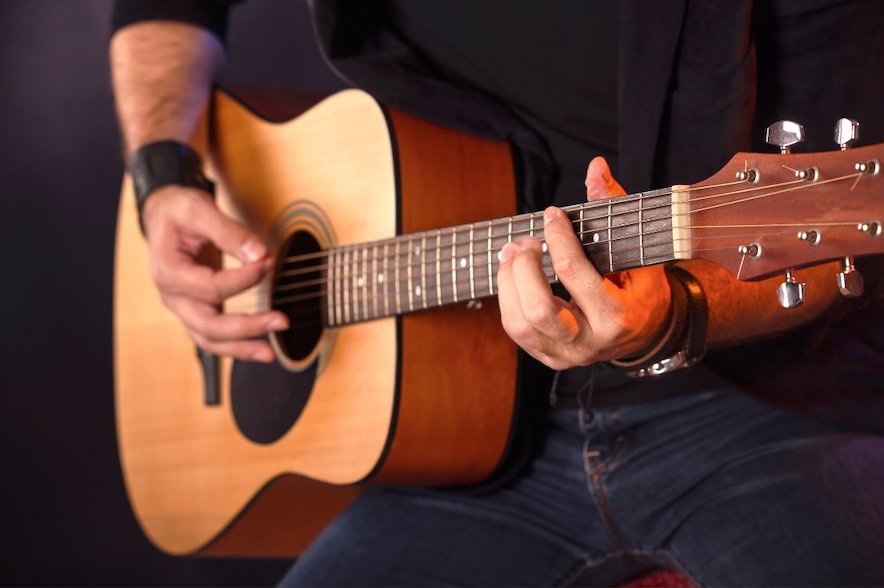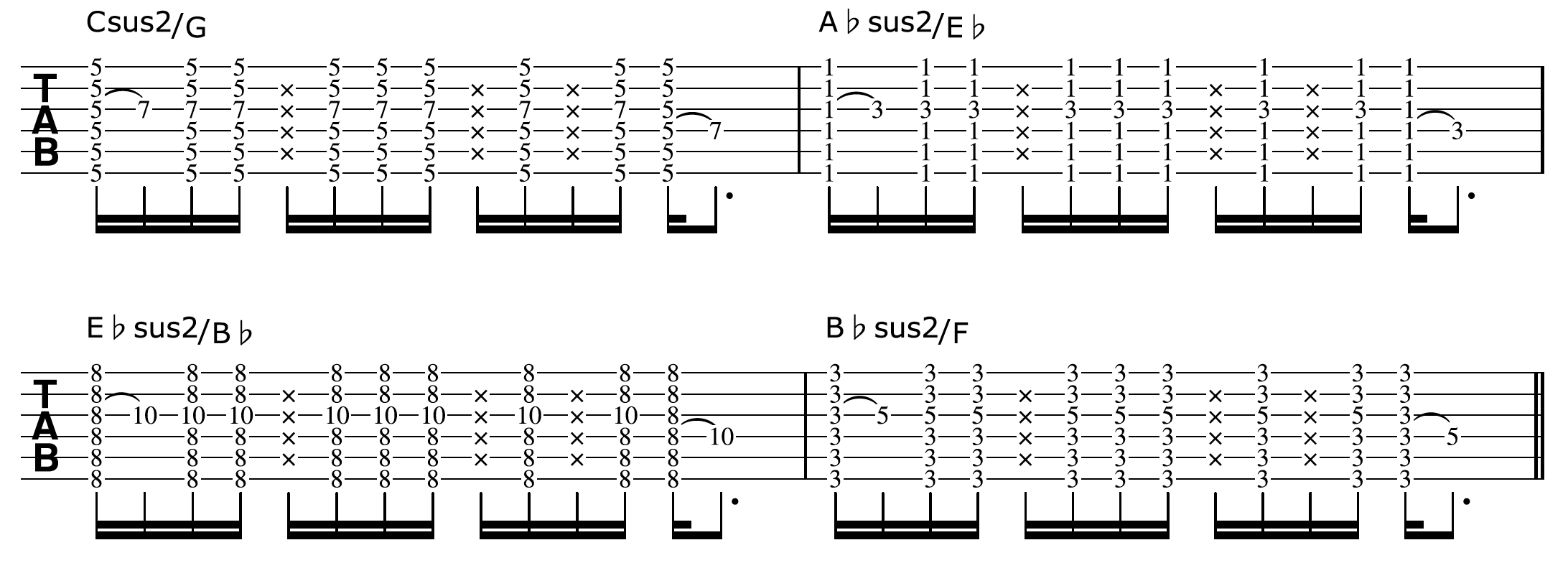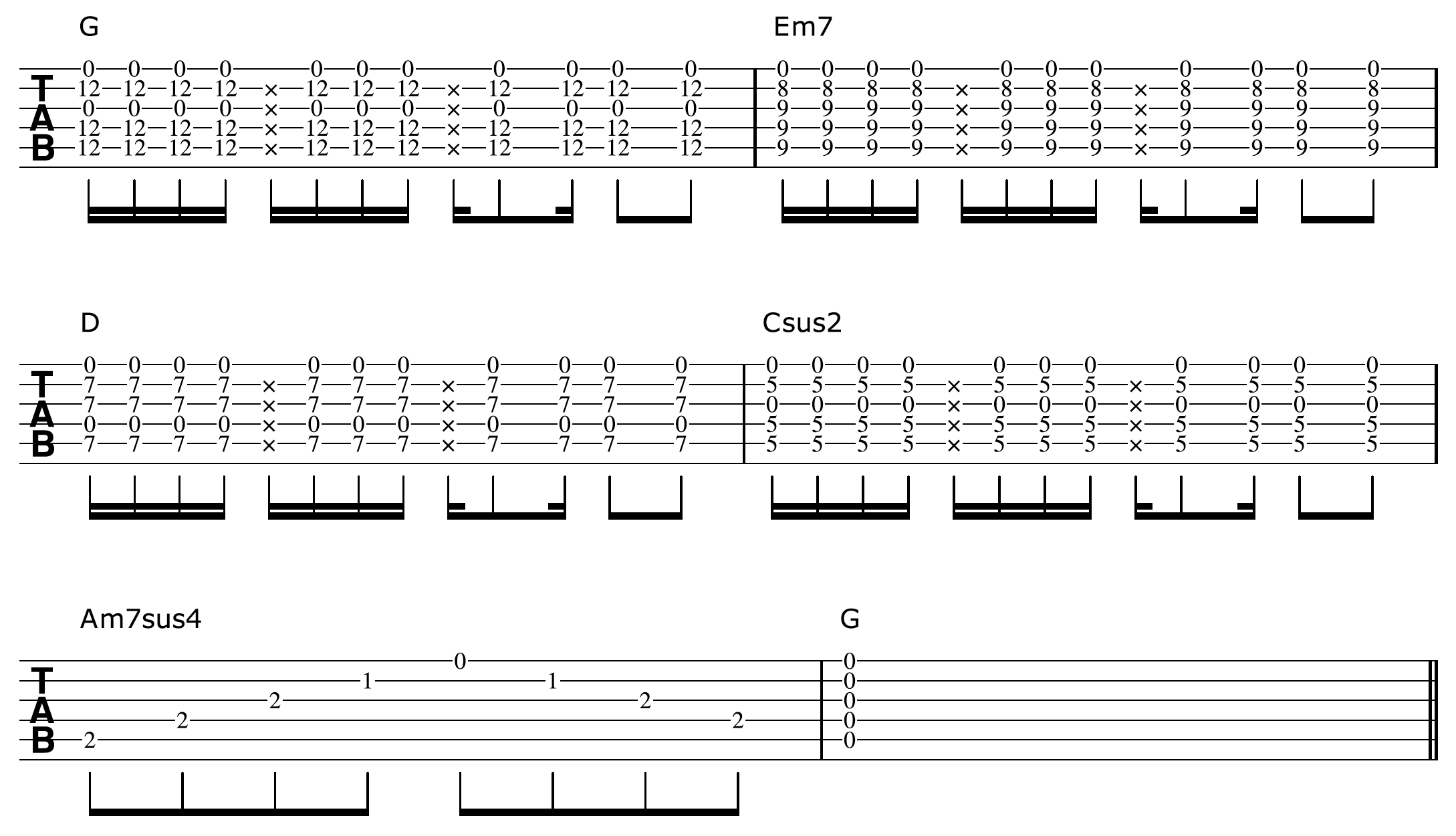How To Sound Amazing Playing Chords On Your Guitar In Open G Tuning
by Simon Candy
 There are many cool and unique open tunings for your guitar playing that will open up all sorts of possibilities that just aren’t available to you in standard tuning. Open G tuning is one of these, and today we are going to take a close up look at chords in this tuning.
There are many cool and unique open tunings for your guitar playing that will open up all sorts of possibilities that just aren’t available to you in standard tuning. Open G tuning is one of these, and today we are going to take a close up look at chords in this tuning.
Before you decide that playing in open tunings sounds too hard, and that playing in standard is challenging enough, just understand that open tunings are created to make things EASIER to play, NOT harder. If you can play guitar to a reasonable standard, then you can most definitely be sounding great in a tuning like open G immediately!
I will prove this to you today by showing you how easy it is, and how cool you can sound right away playing chords in an open G tuning on your guitar.
What Is Open G Tuning
Before we do however, let’s first take a little bit of a closer look at open g tuning. Despite it’s popularity and association with the blues, this tuning can be traced back as far as 1830 to a piece called “Spanish Fandango”, and is why it is sometimes referred to as “spanish tuning”.
It falls into the category of “open” tunings, where some of the open strings of the guitar are tuned to different notes to create a particular chord when strumming them together.
Here is how open g compares to standard and what you need to do to alter your guitar to this tuning:

* Bolded notes are strings that have been altered from standard tuning
As you can see, to achieve an open g tuning, you simply change the 6th, 5th, and 1st strings of your guitar to a D, G, and D note respectively. The 4th, 3rd, and 2nd strings remain unchanged.
Our open strings now contain G, B, and D notes exclusively, which just happen to be the 3 notes that make up a G major chord:
G Major = G B D
Strumming all open strings together now gives you a G major chord.
Don’t Avoid Open Tunings Like I Did
 There was a time when I would avoid anything that was in an open tuning like the plague.
There was a time when I would avoid anything that was in an open tuning like the plague.
I had a false premise that open tunings were difficult to play in, changing the way I had come to know and visualise the fretboard.
To me, I thought it would be like starting the guitar all over again and certainly not something I wanted to do. How wrong I was, and how much I missed out on because of, HOW WRONG I WAS!
Tunings such as open g will:
• Enhance and borden your creativity on the guitar
• Increase the scope of sound available to you on the guitar
• Make other open tunings so much easier to learn and create with
Don’t make the same mistake I did, open tunings are not only fun to play in, they are easy to play in too, as I am about to show you. You will see, like I did, that you can sound great straight away in an open g tuning, even with just entry level guitar skills.
Chords In Open G Tuning
 The following are 3 ways you can create with chords in an open g tuning on your guitar. There are many more, however these will give you a great head start into the wonderful world of open tunings.
The following are 3 ways you can create with chords in an open g tuning on your guitar. There are many more, however these will give you a great head start into the wonderful world of open tunings.
Learn them well, and then use these ideas to come up with your own creations and variations. This is essential to do to really make open g tuning part of your guitar playing.
Single Fret Bar Chords
The great thing about open tunings is that if you can sound a chord right off the bat by simply strumming the open strings of your guitar, then this holds true for when you bar a single fret.
So instead of needing the majority, if not all of your fingers, plus 3 frets to play a bar chord, you now only need 1 finger and 1 fret.
Take the following progression in open g tuning for example:

The chords above derive their name from the root note on the 5th string.
However, the 5th of each chord is also being played on the 6th string, below the root note. This results in the slash chords you see above.
Simply put, a slash chord is when the lowest note in the chord is a tone other than the root of the chord. The first note you see is the chord, the second note (to the right of the slash) is the “non root” bass note.
Due to our tuning we only need our index finger to sound these chords, resulting in the remaining fingers being free to add extensions and embellishments.
In the example above, I only need to use the ring finger of my fretting hand to apply these extensions and embellishments.
I am first hammering on the 9th of each chord before hammering on the 6th.
Doing the same thing in standard tuning would not only sound different, but be much harder to do.
Droning Open Strings
A great feature of any open tuning is the drone you get with the open strings, which you can in turn utilise in your playing.
In the following example I am running a couple of simple chord shapes down the fretboard, maintaining the drone of the open strings to give it that open g sound:
I am using my 2nd, 3rd, and 4th fingers to fret the G, Csus2, and D chord shapes above.
Notice that the G and Csus2 chords are the exact same shape, with the D only varying slightly from this.
The Em is the odd one out, and will require all 4 fingers to fret it.
The consistency of the open string drone and the various ways they relate to the fretted notes of each chord is what makes this progressions and others like it sound so cool and unique.
Harmonising In 6th’s
Let’s stick with the drone of the open strings and integrate this approach with a very common harmony used on the guitar known as 6th’s.
The great thing here is if you are already familiar with how 6th’s look on the fretboard from a visual point of view, then nothing changes in the open g tuning. This is because we’re going to play this harmony on the 2nd and 4th strings, which remain unchanged in this tuning.
Here is how the 6th harmony looks on this string set:

Your fingers are only forming one of two shapes when playing 6ths in this way.
It is best to keep your second finger on the 4th string throughout with your first and third fingers fretting the notes on the 2nd string. Which finger you use here will depend on the shape you are holding at the time.
Now let’s add the drone of the open strings to these 6th’s:

Once again we hear that awesome sound we now get with the open strings in an open g tuning ringing against the fretted notes of the 6th harmony.
Feel free to strum the above example with any kind of pattern or time/tempo you like.
There are many cool ideas you can create from these 6th’s using the droning open strings. Here is one such idea:

The idea here is to arpeggiate the 6ths (ie. play the notes of the harmony separately as opposed to together) across the drone of the G open string we now have in this tuning.
Be sure to hold each 6th harmony shape (ie. the fretted notes) of each position down at the same time so that all the notes ring throughout.
If you were to play it without holding the harmony shapes, you would not get a nice and fluent sound.
Be sure to listen to the example to hear how this sounds when holding down the 6th harmony shapes.
To solidify things in this article, plus more ways to play chords in an open g tuning, checkout the video below:
In this video you learn more ways to create great sounds using open g tuning including a very cool way to play a blues in open g that is much easier to do compared to playing the same thing in standard tuning.
To discover more awesome, advanced sounding, yet easy to play ideas using chords, melodies, and riffs in this tuning, download the acoustic guitarists guide to open g tuning
